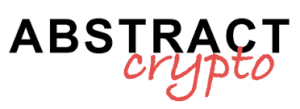According to what was reported yesterday by the “European Banking Authority” (EBA), crypto companies operating in Europe will have to comply with some stringent steps on the topic of regulation.
As drafted in the final report of the body, PSP and CASP operators will be required from December 2025 to follow certain guidelines, complying with European regulatory regimes.
On one hand, this news promotes a clearer and more transparent legislative framework, on the other hand, it limits some innovations in the sector such as in the stablecoin field.
Let’s see all the details below.
Crypto regulation: the EBA warns about financial instability risks in Europe
Yesterday, the European Banking Authority (EBA) highlighted how the failure to comply with crypto regulations for companies in Europe can lead to severe structural damage.
The agency, which is responsible for overseeing the European banking market, stated that non-compliance with the rules could trigger internal financial instability.
The EBA focused primarily on the lack of controls for companies operating in the crypto sector within the Union.
The missed assessments in the policies and internal procedures of these companies can “undermine the effectiveness” of the restrictive measures regimes in Europe.
The whole situation would lead to negative effects for the EURO currency with a consequent lack of trust of the people towards the institutions.
Furthermore, the evasion of regulations can entail legal and reputational risks even for the financial institutions involved.
These risks include payment service providers (PSP) and crypto-asset service providers (CASP). The growing popularity of cryptocurrencies has brought with it a series of challenges for financial regulators.
Nowadays, digital currencies, while offering new opportunities, can also be used for illicit activities due to their pseudonymous nature.
The EBA has emphasized how adoption without adequate regulation creates the conditions for the spread of harmful behavior on the economy in Europe.
The organization has insisted on the implementation of know-your-customer (KYC) and anti-money laundering (AML) measures as mandatory practices for crypto companies.
These control measures require the verification of users’ identity and the monitoring of transactions for suspicious activity.
The European Banking Authority outlines new guidelines aimed at crypto companies
Understanding the potential risks of financial instability in Europe, the EBA has published some guidelines for crypto companies PSP and CASP in terms of regulation.
As reported in the agency’s Report, the guidelines ensure the implementation of national and EU sanctions. The text states as follows:
“These Guidelines clarify how the policies and procedures of restrictive measures interact with financial institutions’ broader governance and risk management frameworks, to avoid operational and legal risks for financial institutions and ensure effective implementation of restrictive measures.”
Crypto companies must first choose a reliable screening system that allows them to comply with the imposed rules by the current regulation.
Furthermore, to comply with national restrictive measure regimes in Europe, these must also manage the risks that users may potentially evade the measures established by the regulators.
In practice, these companies must ensure that they are in a position to comply with the regulation on crypto and enforce it with their collaborators and users.
All this translates into the following obligations:
- report to the competent authorities any suspicious transaction that exceeds a specific threshold, preventing acts of money laundering;
- adopt measures to protect customer funds, including the use of secure wallets and the separation of customer funds from corporate ones;
- provide detailed reports to regulatory authorities on a regular basis, including information on transactions, funds held, and measures taken to ensure compliance.
The strengthening of crypto regulation in Europe with these guidelines will come into effect from December 30, 2025, onwards.
Possible crackdown on stablecoins not compliant with MiCA
The tightening of the new regulatory guidelines imposed by the EBA for crypto companies in Europe could soon reach the stablecoin sector as well.
Already in 2022, the Agency had drawn the attention of the directly involved parties to new potential tightenings of the regulations.
A few months later, with the drafting of the MiCA, the first rules regarding asset-referenced tokens (ARTs) and e-money tokens (EMTs) arrived.
The European Banking Authority (EBA) called attention to new stablecoin measures in an important statement for issuers, consumers, and stakeholders in the crypto space. pic.twitter.com/M1PRYBZ1Hi
— European Crypto Initiative (@EuCInitiative) July 22, 2024
It is not excluded that operators in Europe will be forced to include bans or limitations on the distribution of non-compliant stablecoins in the new guidelines.
This means that exchanges and crypto companies will have to ensure that their stablecoins are backed by real assets and are subject to regular audits.
Coins such as Tether (USDT) could face serious issues in the coming months if everyone follows what is outlined by the EBA.
This raises the question of a potential imbalance in the stablecoin market, given that USDT is the dominant currency in the sector with a capitalization of 127.5 billion dollars.
In the meantime, fintech companies and investment banks in the Union are strongly focusing on those stablecoin that are anchored to the value of the Euro.
Just yesterday, the news arrived about the launch of EURCV, a stablecoin supported by the fourth French bank Société Générale, within the XRP Ledger.
Let’s prepare to face a restructuring of the current stablecoin landscape in Europe, even though the path still seems long.


